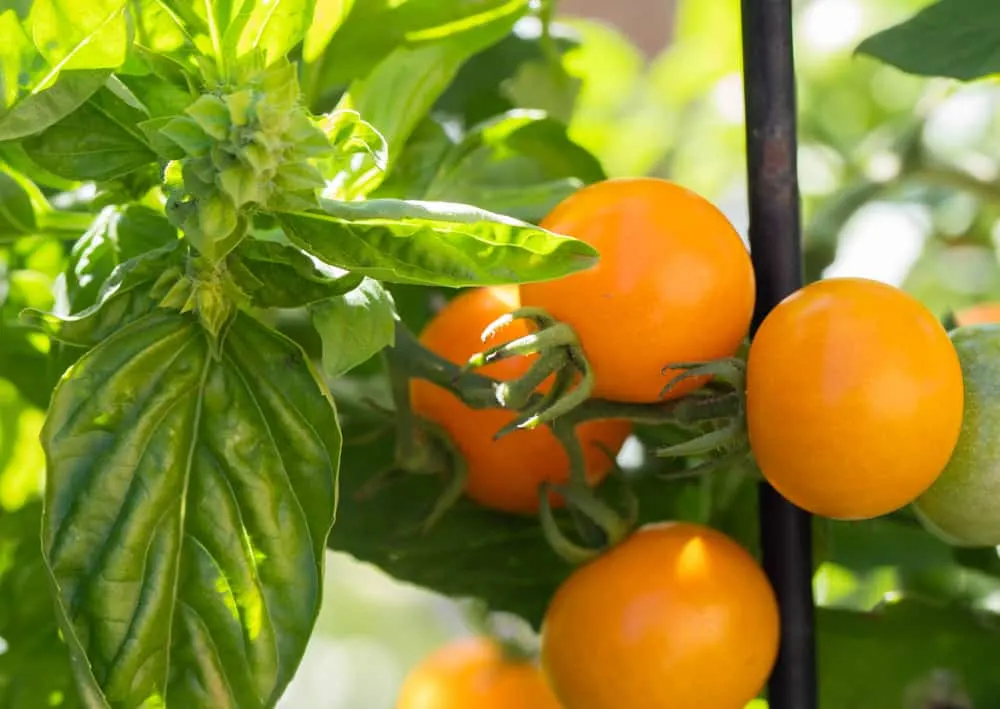
Some plants play nice when planted together, helping each other grow or deter pests. Others are not so friendly, competing for resources or stunting each other’s growth.
These are called companion plants. Many gardeners believe they can make or break a harvest.
From blossom end rot to blight, companion plants can be valuable tools in preventing the common problems that plague tomato gardeners.
What is companion planting?
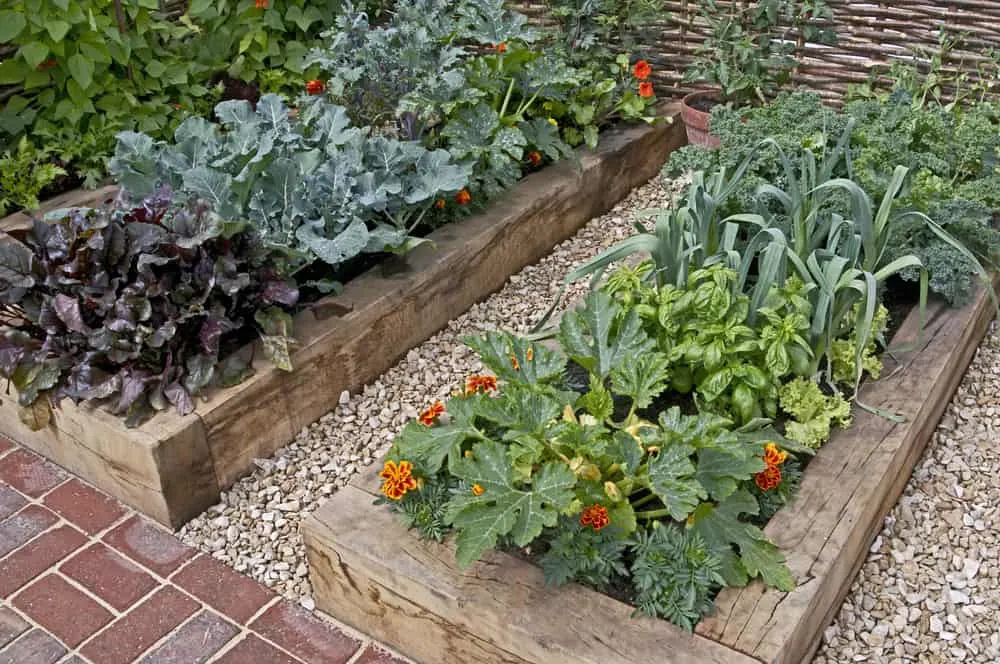
Companion planting has been around for centuries (some say more than 2,000 years). The central philosophy of the practice is to plant mutually beneficial plants next to each other to improve growth.
There are many purported benefits of companion planting:
- Pest control: A plant protects its neighbour from certain pests by acting as a deterrent or luring the pests towards it and away from the other.
- Light management: Tall full-sun plants create shade for shorter shade plants and protect them from scorching.
- Soil health: Two companion plants that require different nutrients balance out those components in the soil.
- Weed control: Shorter companion plants covering the ground discourages the emergence of weeds.
- Higher yields: Companion planting maximizes space and improves plant health, leading to a more productive harvest.
- Enhanced flavor: Some gardeners believe certain companion plants improve each other’s flavor.
- Biodiversity: Interspersing companion plants increases plant diversity. This improves soil quality and deters pests, leading to healthier plants and a healthier garden environment.

Many gardeners swear by these benefits. Others have labeled the practice of companion planting pseudoscience.
While there isn’t much scientific evidence to back up some of the claims, it’s hard to discount the positive experiences of thousands of gardeners over thousands of years.
And, whichever side of the fence you fall on, you will likely be planting some other vegetables with your tomatoes anyway. Why not choose the ones that may give you the most benefit?
These 8 plants are the ideal plants to grow next to your tomatoes:
1. Basil
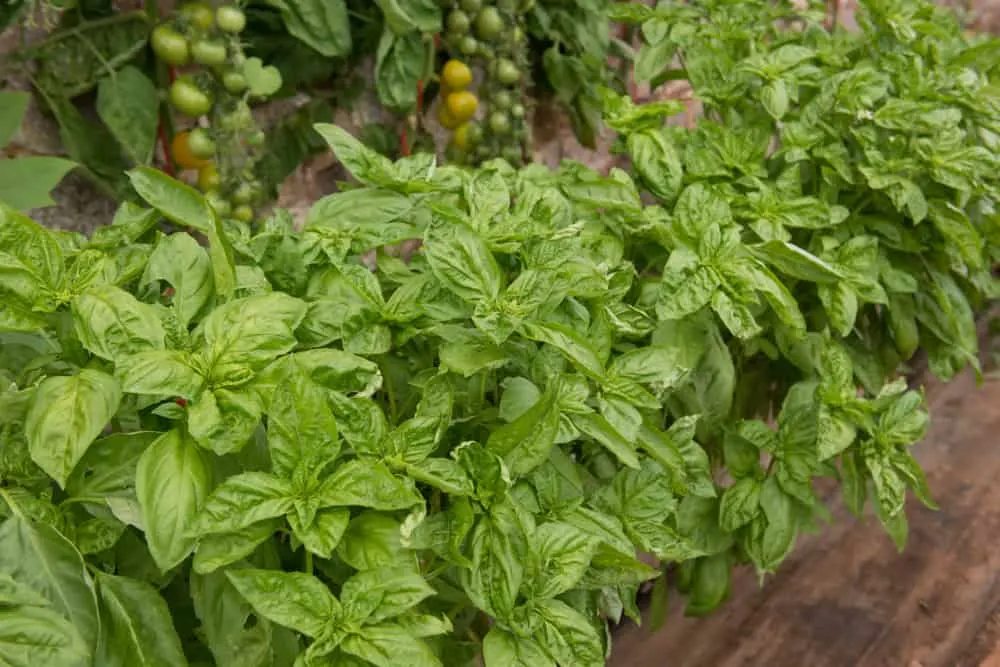
Basil and tomatoes are a great match in the garden and in the kitchen. They have been labeled a perfect pair in cooking, and if pizza flavors are anything to go by, I’m sure you’ll agree. But they’re also a perfect pair in the garden for a few reasons.
Basil is believed to steer certain pests away from tomato plants. The common consensus on which pests include whiteflies, thrips, and mosquitos, with some gardeners adding tomato hornworms and aphids to the list.
However, the real magic happens after the harvest when you bite into your first tomato. Basil is said to enhance the flavor of the tomatoes as the plants share nutrients in the soil. Some gardeners say their tomatoes are sweeter when planted next to basil, or that they obtain some of the basil flavors.
Although this evidence is anecdotal, it wouldn’t hurt to try it out yourself. If you don’t get the same results, you will still have the benefit of the tomato basil pairing in your kitchen.
2. Garlic
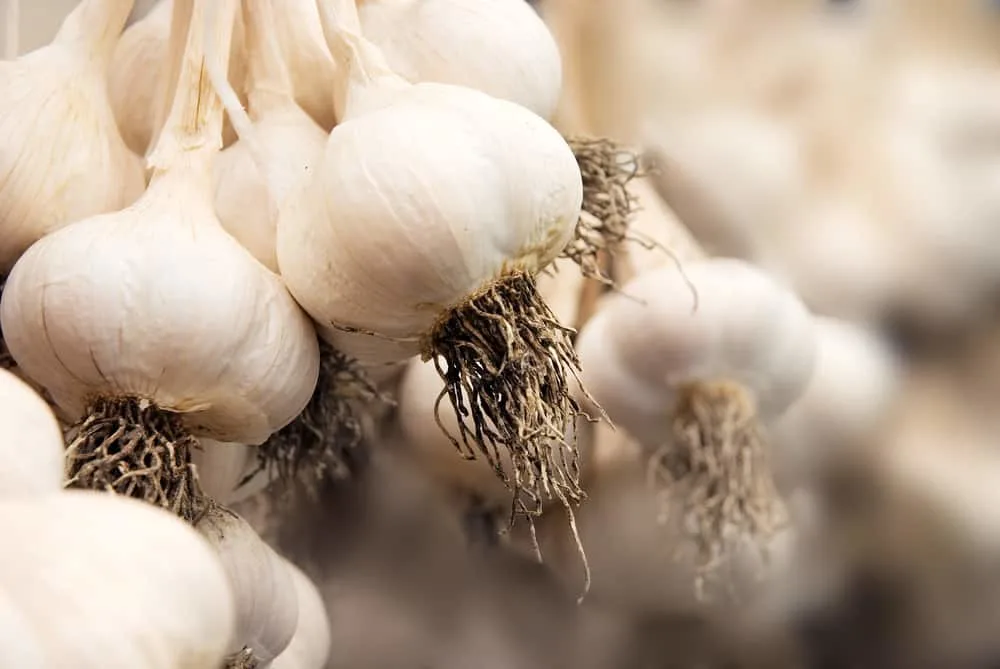
Garlic, and other alliums like onions, are known for their pungent smell. And if that smell can keep vampires away, it’s bound to keep pests away too.
Some studies have shown that garlic is an effective repellent for spider mites and aphids, both common problems for tomato plants. While it may not remove the problem completely, there is evidence that it lessens it, in some cases significantly so.
Garlic also has the potential to improve soil health by balancing soil nutrient levels and impacting soil microbes. This, along with a lower chance of pest problems, can increase yield and improve your harvest overall.
Plus, like basil, garlic and tomatoes are great kitchen companions.
3. Nasturtiums
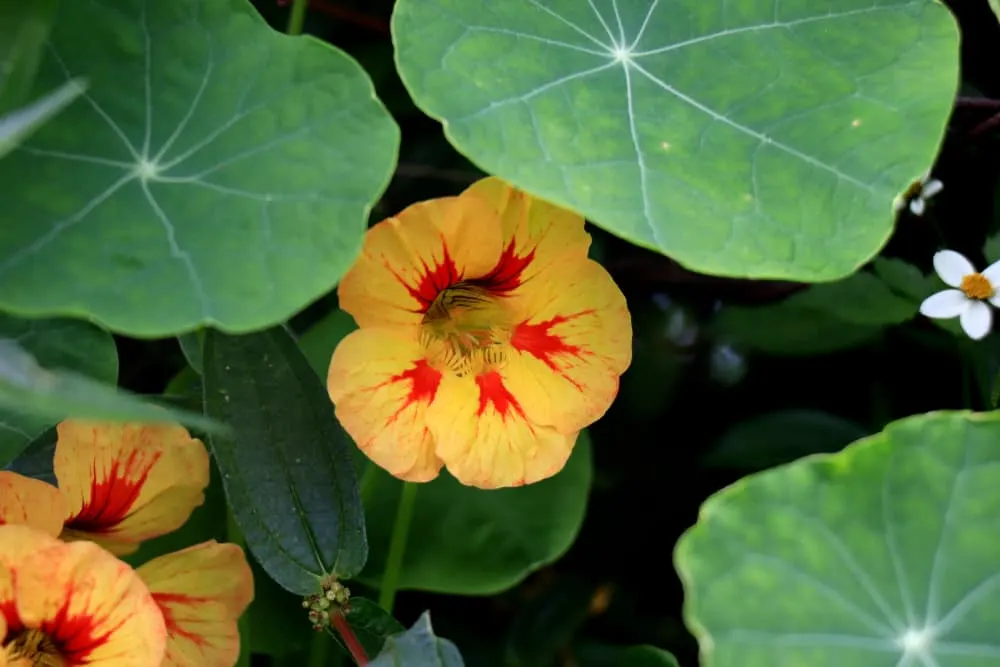
If you’re looking for an ideal ‘trap crop’ – planted to draw pests away from your precious plants – nasturtiums are the answer.
Although they are edible (the flowers are great in salads), these plants are largely grown in vegetable gardens for their ability to attract a range of pests that would otherwise eat your tomatoes. Aphids and whiteflies love nasturtium leaves, and these bugs can also attract predator pests to feed on them instead of your plants.
Be careful not to plant nasturtiums too close to your tomatoes. They have a deep root system that may interfere with the tomato roots, and the vines tend to take over any garden they’re in.
4. Asparagus
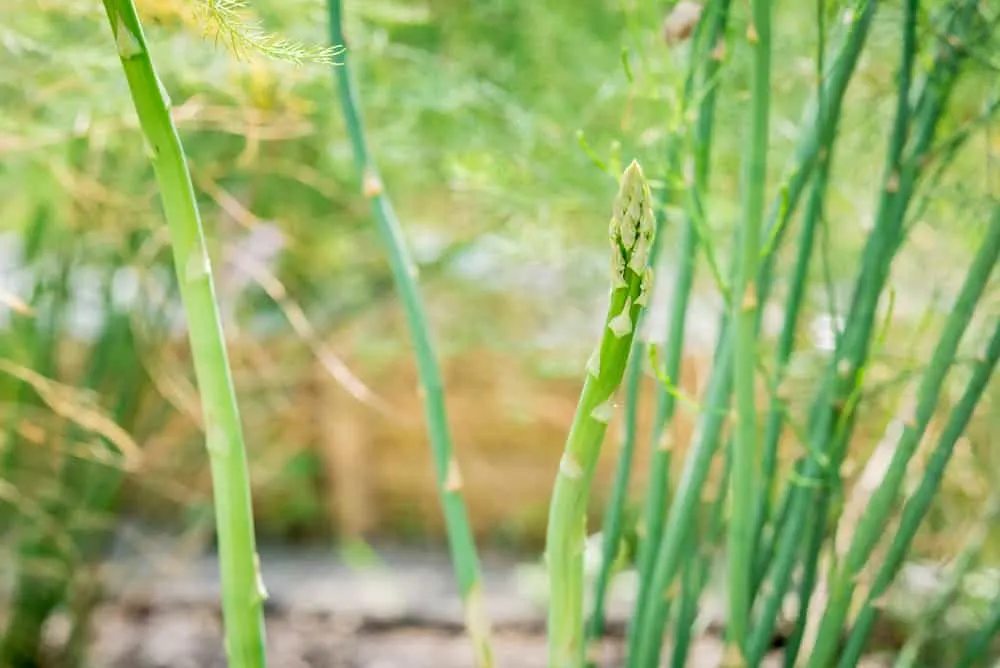
Tomatoes and asparagus are a match made in gardening heaven. These plants both emit chemicals that deter pests. It just so happens that the pests they ward off are specific to one another.
Asparagus releases a chemical that deters root-knot nematodes – a common tomato pest problem that severely impacts the roots of the plant. Tomatoes contain solanine which wards off the asparagus beetle. It’s truly a win-win situation.
They are also great growing partners. Tomatoes and asparagus reach maturity at completely different times. To save space, plant them close to each other and they will never compete for nutrients or light, as their growing periods differ.
5. Borage
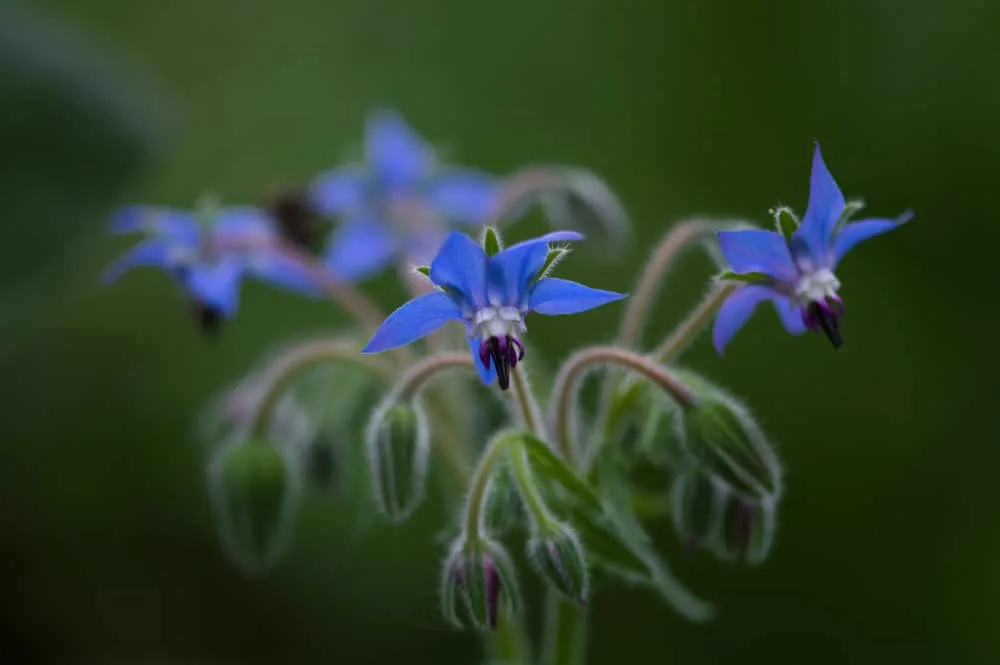
The benefits of borage are two-fold. It is famous among tomato gardeners for its ability to deter the dreaded tomato hornworm. These common pests eat all parts of the tomato plant, from the leaves to the fruit, completely decimating a crop.
And, while deterring these bad bugs, borage attracts some good bugs too. The blue flowers attract bees, wasps, and other pollinators that are beneficial in any vegetable garden. Although tomato plants don’t need pollinators to grow and produce, they can help the other plants in your garden that do.
Of all the tomato companion plants, when it comes to looks, you can’t go wrong with borage. Their stunning blue flowers are a great addition to any tomato garden – or any garden in general.
6. Carrots
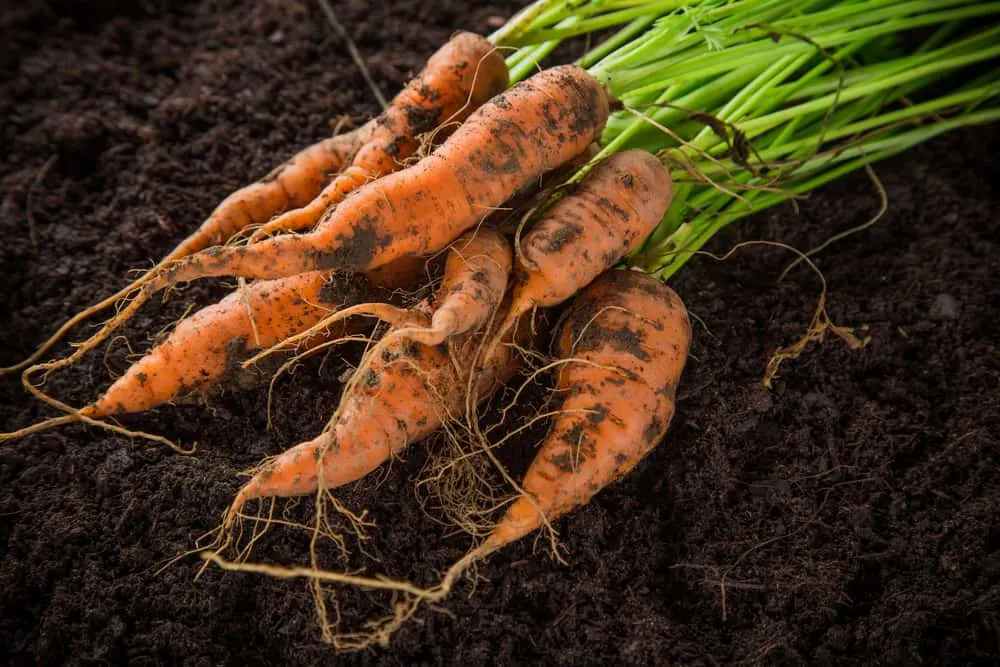
The jury is still out on the carrot-tomato pairing, but many gardeners report significant mutual benefits in their companion planting experiences. Unlike other companion plants, this pairing has nothing to do with pests, but focuses on growing conditions.
When carrots are grown next to tomato plants, they are said to aerate the soil and improve its quality. This makes it easier for the tomato roots to absorb water and beneficial nutrients from the soil.
As the tomato plants grow taller, they also provide some shade for the carrots that are sensitive to sun damage. Some gardeners report that their carrots are far smaller when planted next to tomatoes, but that the yield is higher. In that case, this pairing may be more beneficial for the tomato than the carrot (although that is unlikely to be a qualm amongst tomato gardeners).
7. Marigolds
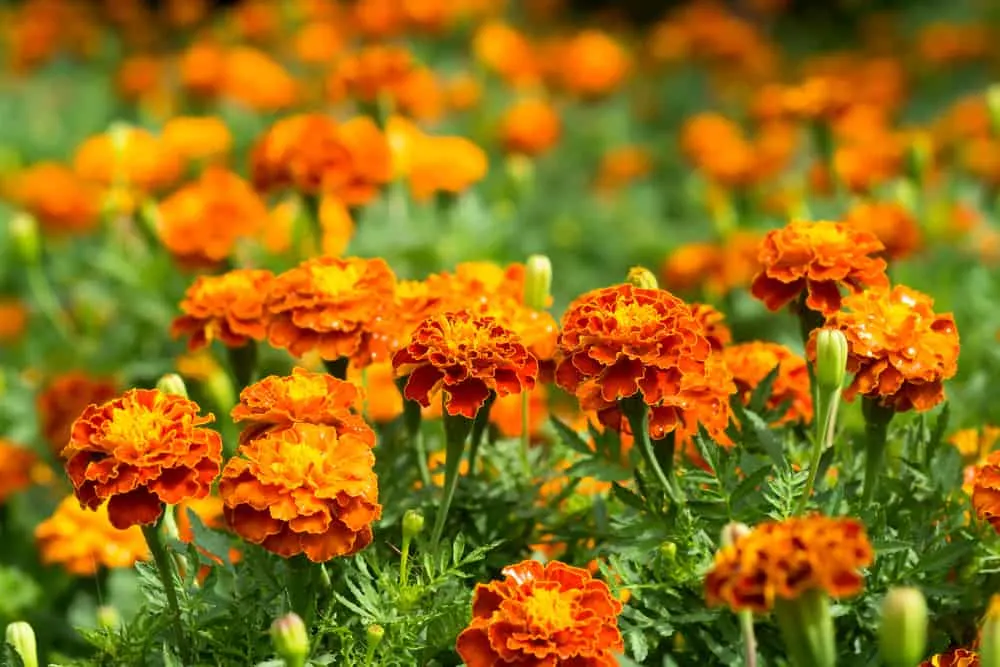
As I’ve mentioned, some companion planting theories are considered folklore, with little scientific evidence to back up the claims. That is not the case with marigolds.
A recent study has shown that these flowers deter whiteflies by releasing a substance called limonene (also found in citrus peels).
Like asparagus, marigolds also prevent problems with root-knot nematodes. And while the evidence is less conclusive, some gardeners believe marigolds deter tomato hornworms and thrips too. It seems when it comes to pest control, there’s little a marigold cannot do.
When planting marigolds for tomato plant protection, begin planting well before the tomato plant growing season and use several plants in the same area for the best result.
To learn more about planting marigolds with tomatoes (and why you should) read our article here.
8. Lettuce
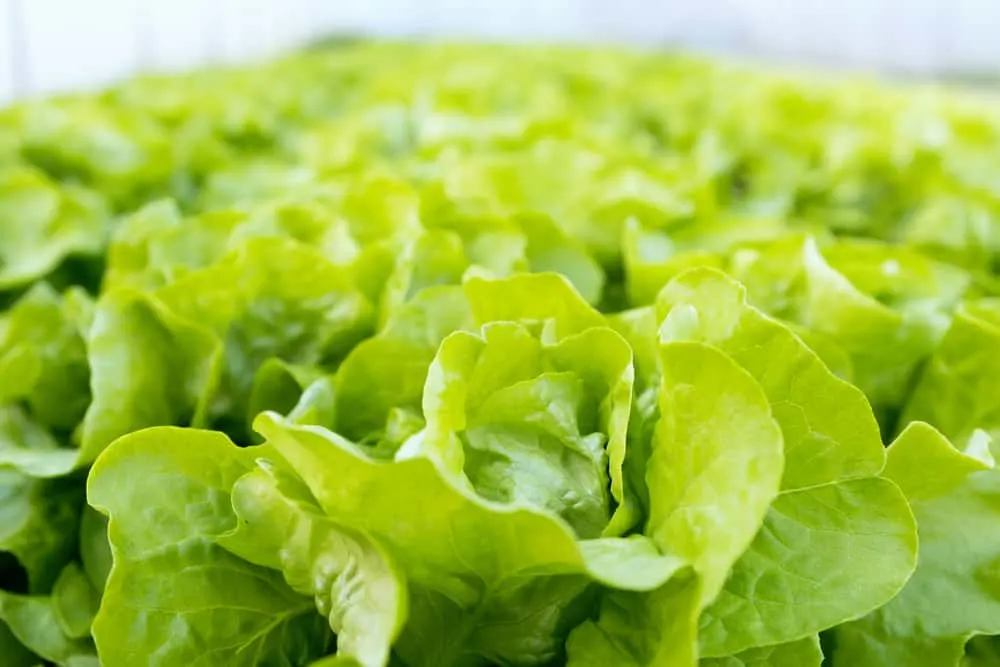
Lettuce and tomatoes are as great in the garden as they are in a salad (or BLT, if you prefer). It may be one of the more unconventional companion plant pairs, as it has nothing to do with pests or plant health. But, these two garden friends help each other out in a different way.
Lettuce is a low-growing plant that covers a lot of ground as it reaches maturity. This keeps the soil cool and moist, protecting the tomato roots from damage. In return, the growing tomato plants provide shade for the lettuce leaves that are quickly damaged by the sun.
If you have any gaps between your tomato plants, filling them with leafy vegetables will protect the soil around your tomatoes and improve biodiversity. Plus, it can’t hurt to have two of the most common salad ingredients fresh and on-hand in your backyard.
These plants – whether deterring pests, improving flavor, increasing yield, or aiding growth – are ideal garden friends for your tomatoes. Surround your tomato plants with as many friends as you can, and they will be happier and healthier as a result.
While developing your companion planting plan to maximize good friends, you should also avoid any companion planting foes on our list of the worst tomato companion plants that may inhibit your tomato plant’s growth.
Take a read below:

